Philodendron mayoi is a lovely rare climbing plant native to Brazil. It has paper-like, deeply-lobed leaves resembling palm fronds with reddish veins on the underside and a reddish petiole. Did you know it is air purifying and easy to grow?
Learn about P. mayoi care (light, humidity, fertilizer, soil, watering, pruning, temperature, etc.) and how to propagate it. We will also talk about its appearance (mature and juvenile leaves, flowers, and stems) and growing habits.
That is not all. The post has Philodendron mayoi vs. radiatum, fendleri, elegans, lacerum, and xanadu that will help you tell it apart from these similar-looking plants. However, will not do a comparison with Philodendron Tahiti as we already covered it elsewhere. See more on Philodendron Tahiti which also has care requirements and a lot more.
Lastly, if you wish to buy this plant, we have the best places, including Etsy.com, eBay, or in places like the UK, Canada, Australia, NZ, Philippines, Singapore, etc., and prices.
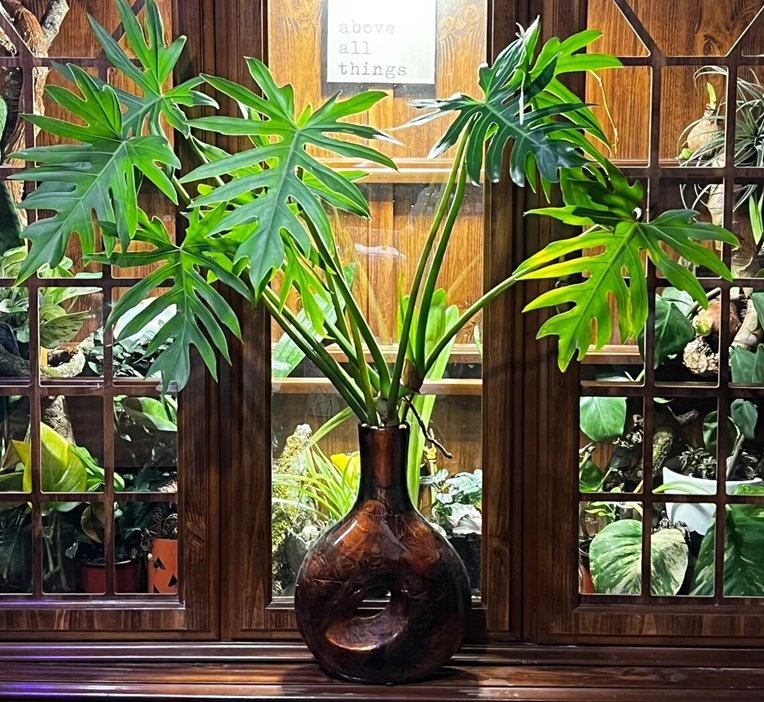
Contents
- Quick overview
- History and origin
- Description and appearance
- 1. Growth habits
- 2. Growth rate and size
- 3. Baby, juvenile, and mature leaves
- 4. Stems
- 5. Flowers
- Similar plants
- 1. Philodendron mayoi vs. radiatum
- 2. Philodendron mayoi vs. elegans
- 5. Philodendron mayoi vs. xanadu
- 4. Philodendron mayoi vs. lacerum
- 5. Philodendron mayoi vs. fendleri
- Philodendron mayoi care tips
- Philodendron mayoi propagation
- 1. Water propagation
- 2. Soil propagation
- 3. Air layering
- Problems or issues
- 1. Pests, disease, and root rot
- 2. Leaf discoloration
- 3. Drooping and leaves curling
- Where to buy Philodendron mayoi
- Frequently asked questions (FAQs)
Quick overview
- Scientific name: Philodendron mayoi
- Family: Araceae (aroid or arum family)
- Common name: Mayoi Philodendron
- Habitat: Brazil
- Toxicity: All parts of the P. mayoi plant are toxic to dogs, cats, and humans. Why? Because its sap has sharp, needle-like crystals, which will cause severe oral irritation and a burning sensation. Also, the patient’s lips, tongue, or mouth may swell and turn red. More signs include loss of appetite, swallowing difficulties, drooling, etc. Kindly keep this plant out of reach of children and your pets.
- Care level: Easy
- Growth rate: Fast
History and origin
Philodendron mayoi (pronounced as fil-oh-DEN-dron MAY-o-e) is an accepted Philodendron species native to Brazil. It was collected for the first time in 1995 and published in 2000 by Dr. Eduardo Gomes Gonçalves, a leading Brazilian aroid botanist.
Contrary to what many people assume, this species didn’t get its epithet mayoi from its appearance or features. Instead, Dr. Eduardo G. Gonçalves named it mayo in honor of the UK’s Royal Botanical Gardens, KEW, Dr. Simon Mayo.
Lastly, this fern or palm-like Philodendron resembles Philodendron radiatum and P. fendleri. Also, some people confuse it with Thaumatophyllum xanadu, and others claim it is the same as Philodendron Tahiti.
Description and appearance
Let us now look at what it looks like (appearance) and growing habits. They should help you identify them with much ease.
1. Growth habits
Philodendron mayoi is a terrestrial, creeping, or climbing hemiepiphyte native to Brazil, around the Federal District and Distrito Goiás in West Central Brazil. A hemiepiphyte has both ground (terrestrial) and epiphyte (on other trees) growth phases.
It is common on limestone outcrops and stream ravines, and juvenile plants creep on the ground. However, it must be climbing or a hemiepiphyte to flower.
Lastly, like most other Philodendron species, this plant morphs, i.e., baby, juvenile, and mature forms, look distinctive.
2. Growth rate and size
Philodendron mayoi has a fast growth rate. At home, it can grow up to 4 to 6 feet high. However, to be this tall, provide it with a place to climb.
3. Baby, juvenile, and mature leaves
Baby plants will have smaller oval entire green leaves, while in the juvenile stage, these leaves will start having shallow, poorly formed lobes with a nearly rounded heart-shaped base.
On the other hand, Philodendron Mayoi’s mature form will have large (11.8-23.6 inches long by 11-19.7 inches broad) pinnatifid or deeply lobed, paper-like dark green leaves with an oval outline. The lower surface is paler, and veins are reddish or pink-tinged. But a new leaf will be paler.
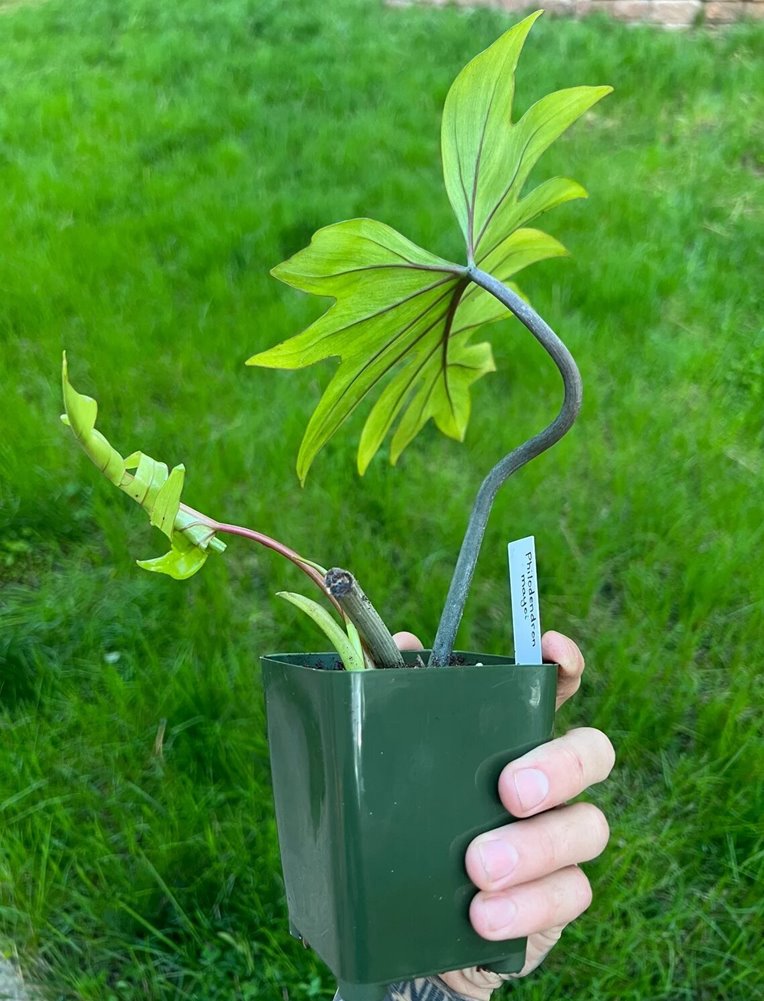
These leaves have 4 to 6 lobes on the anterior section whose sinuses go almost to the midrib, i.e., 0.2 to 0.5 inches away. The midrib has a V-shaped cross section, and each lobe has one primary lateral vein.
On the other hand, the posterior section has partially nude posterior ribs, each with 1-2 poorly developed lobes pointing to the base and 1-2 pointing toward the apex.
Lastly, their petioles are green with red warty growths and a slightly flat upper side. These leaf stalks have comparable lengths with the lamina.
4. Stems
Stems have green internodes in younger plants, while in older ones, they are ochre, and their nodes have brown aerial or adventitious roots. Also, they have linear, lance-shaped transparent deciduous (fall after some time) cataphylls.
5. Flowers
Mature P. mayoi will have 1-3 inflorescence per axil. Each has a surrounding spathe (bract), greenish outside and white inside, and a spadix (bears small flowers).
The spathe has the upper blade and lower tube, while the spadix has three portions, i.e., the lowermost female, middle sterile male, and upper fertile male.
Similar plants
Many people confuse P. mayoi with many other similar-looking plants. Here is a comparison to help you tell them apart.
1. Philodendron mayoi vs. radiatum
Philodendron radiatum is native to Mexico through to Northern Colombia. It has a shallowly to deeply lobed, roughly triangular oval leaf with a lobed heart-shaped base. The basal lobes are further segmented or lobed, and the mid rib.
P. radiatum is one of the closest species to P. mayoi. How do they differ from one another?
Philodendron mayoi has a peduncle roughly equal to a spathe. The spathe is white on the inner side, and the spadix isn’t thicker in the sterile male zone. Also, the leaf has an oval outline, no posterior rib, and deeply cut lobes, i.e., go nearer the midrib.
On the other hand, Philodendron radiatum has an oval-triangular outline, and lobes are deep to shallow cut. The midrib is paler or the same color as the blade but has reddish green streaks, and these leaves have no posterior ribs. Also, the spathe is 1.3-6.3 longer than the peduncle and is pink to dull reddish inside the blade and dark purple-violet inside the tube.
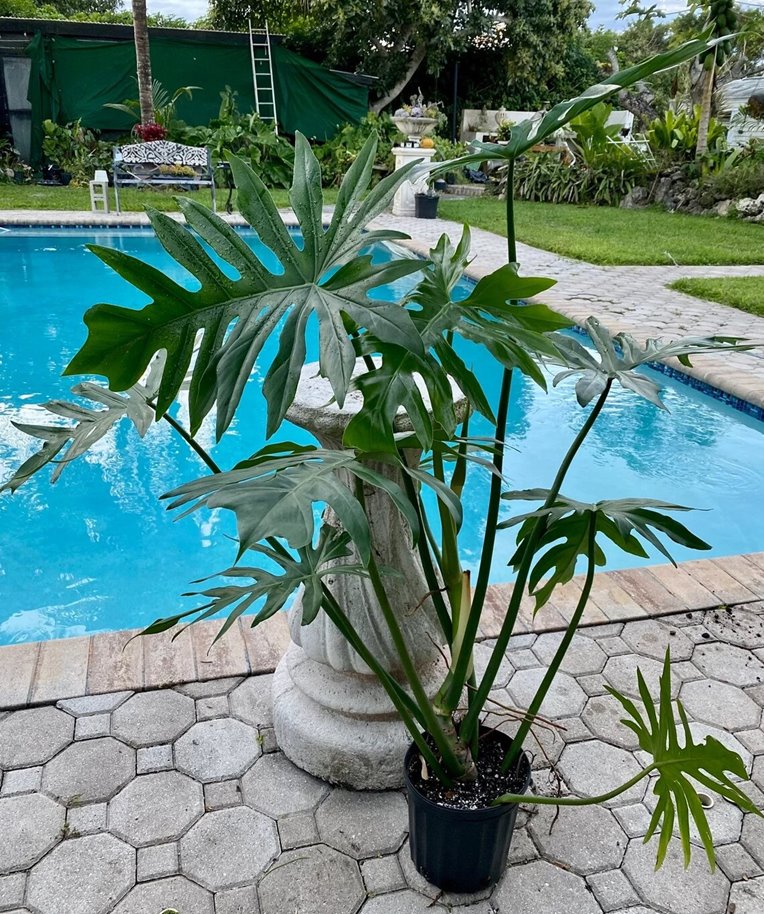
2. Philodendron mayoi vs. elegans
Philodendron elegans is a robust, climbing hemiepiphyte native to Colombia. Mature plants will have a fairly thick stem (up to 4-inches) and pinnatipartite 6 to 9 lobes per side.
Philodendron mayoi differs from P. elegans because it has fewer deeply cut lobes and papery-like leaves with an oval outline. Also, their petiole has reddish warty growths, denuded posterior ribs, and the spathe is white inside.
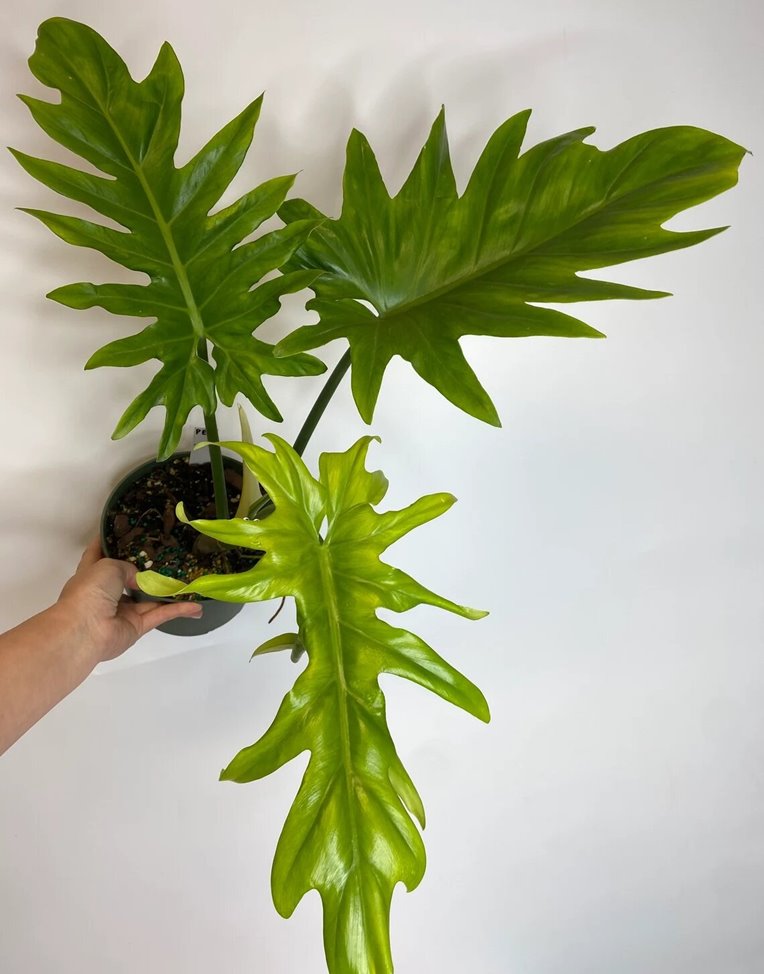
On the other hand, P. elegans has thinly leathery leaves with pinnatipartite lobes and an oval or oblong oval outline. The lower lobes (towards the base) are closer, and the petiole has pale green spots and sheaths at the base. Also, tee basal ribs are scarcely denuded, and their spathe is dirty dark purple inside, not white.
5. Philodendron mayoi vs. xanadu
Thaumatophyllum xanadu (Philodendron ‘Winterbourn’ or Philodendron xanadu) is a self-heading aroid from Paraguay to southern Brazil. Initially, it was classified in the Meconostigma subgenus of Philodendron. However, recently, the whole subgenus was reclassified as a genus Thaumatophyllum.
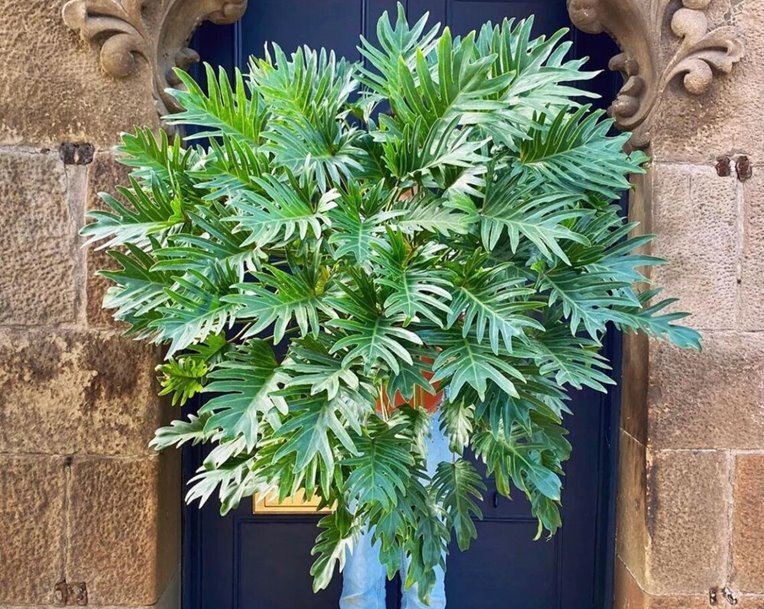
Unlike P. mayoi, a climber, T. xanadu grows like a tree (arborescent habit), forming a mound but doesn’t get very tall, i.e., 2-4 feet tall. Also, it has only a single inflorescence per axil, not 1-3, and the spadix is longer than the spathe.
That is not all. T. xanadu spathe is thicker than mayoi. Also, the leathery green leaves have featherlike 15-20 lobes that are not as deep cut.
4. Philodendron mayoi vs. lacerum
Philodendron lacerum is native to the Greater Antilles islands, i.e., Haiti, Jamaica, Dominican Republic, and Cuba. We don’t know why some people confuse this plant with P. mayoi, as they don’t look similar.
While P. mayoi has pinnatifid or deeply split lobes with an oval outline, P. lacerum has incised-crenate or toothed oval leaves with a heart-shaped base. The incisions are not as deep.
5. Philodendron mayoi vs. fendleri
Philodendron fendleri is often a massive (at least 16 feet long) climbing plant native to Western Colombia, Venezuela, through to Trinidad. So far, we haven’t seen it in the ornamental plant trade.
Like P. mayoi, it has 6-9 deeply lobed or pinnatipartite leaves, and some people may have trouble telling these two plants apart. But it shouldn’t be impossible.
Philodendron mayoi’s posterior ribs are always partially denuded, and the cuts or lobes are deeper than P. fendleri. Also, the spathe is white on the inside.
On the other hand, P. fendleri spathe is a dark maroon-purple inside. Also, the basal ribs are not always denuded, and the lobes near the leaf tip point toward the tip or apex.
Philodendron mayoi care tips
Philodendron mayoi needs a warm place with bright indirect light and above average humidity, 50% or more. Its soil mix should be chunky, well-drained, and high in organic matter, and you should water it when a few top inches of the potting mix feel dry.
Here is more on Philodendron mayoi care
USDA hardiness zone: 10-11, not frost hardy, and cannot tolerate freezing temperatures for long.
- Temperature: 65-85 °F(18-29°C). Avoid temperatures below 50°F and cold drafts. Also, don’t place your plant near heat sources.
- Humidity: 60% or more but can tolerate a bit lower. If too low, buy a humidifier (AquaOasis™ Cool Mist Humidifier is good), have a pebble tray, or mist your plant. Also, you can move it to humid rooms like the bathroom and kitchen.
- Light needs: Bright, indirect light but can tolerate medium. Too little light will slow growth, make the plant leggy, and have smaller paler or yellow leaves (buy grow lights), while the hot direct sun will cause sunburn.
- Soil mix: They need a well-drained, aerated potting mix high in organic matter. An aroid mix (See Etsy.com) will do or add perlite, peat moss, bark chips, and compost to potting soil to make one.
- Watering: Thoroughly water when the top 1-2 inches or up to the 1st knuckle feel dry. And if you have a soil moisture meter, water when the reading is three or less.
- Feeding: Feed once a month with an all-purpose, balanced, liquid fertilizer for houseplants like Bonide Liquid Plant Food 10-10-10.
- Pruning: Cut damaged, dead, or diseased leaves with sterilized gardening shears, and in growing months, you can cut back the stems a bit.
- Repotting: Repot every 2-3 years or when rootbound. Use a pot 2-3 inches broader in diameter.
- Support: Give and train this aroid on a moss pole, trellis, totem, etc.
Philodendron mayoi propagation
Philodendron mayoi propagation is by stem cutting or air layering. Seeds are also viable, but they are rare or hard to find.
We recommend propagating this plant during the growing months, spring or early summer. Why? Because your plant is actively growing and will have ample time to root, put new growth, and establish itself before non-growing months.
Let us look at how to propagate Philodendron mayoi in water. We will also mention something on air layering and soil propagation methods.
1. Water propagation
Water propagation is easy and gives you a chance to see rooting happening. But it takes a little longer, and your plant won’t get the nutrients in the soil. Also, expect a bit of transplant shock.
a). What you need
- Sharp, sterilized gardening shears
- jar
- Rooting hormone. We use Clonex Rooting Gel. It has a water-based formulation with rooting hormone, nutrients and trace elements to nourish young roots.
- 70-90% rubbing alcohol (for sterilization purposes)
b). Steps
- Select a healthy mature stem with at least a node. Then cut it just below the lower node, at about ¼ an inch from the node, with your sterilized gardening shears. If it has more than two leaves, remove the lower one.
- Appy your rooting hormone on the cut end, covering the node that will go inside the water. This step isn’t mandatory but will speed rooting and prevent rot.
- Fill the jar with fresh water and dip your Philodendron mayoi cutting inside the container, ensuring at least one node is under the water always. But don’t immerse leaves.
- Place the cutting in a warm place with bright, indirect light
- Change the water every 4-5 days or if it appears cloudy. Also, add more if the level drops.
If kept in ideal conditions, your plant will have rooted and put on new growth by the end of the 5th or 6th week. Once the roots are long enough (2 inches or more), you can transplant the rooted cutting.
2. Soil propagation
With this method, you cannot see your plant root, and some people find it messy. But on the flip side, rooting occurs faster. Also, your plant will suffer less transplant shock and benefit from nutrients in the potting mix.
You can use the usual potting mix you grow this plant. Even sphagnum moss alone will do. But you will need to soak it for about 20 minutes and then wring it. Afterward, mist it when it starts to dry.
After step 2 above, plant the cutting in soil, ensuring one node is under the potting mix. Then water it and place it in an area with bright, indirect light. Afterward, routinely mist the soil to keep it moist.
If your humidity is low, you can cover the plant with a transplant plastic bag leaving a small opening. However, don’t let it touch the foliage. A small totem should help.
3. Air layering
Air layering is an easy and reliable method. It entails tying moist sphagnum on a node of a selected stem (which you will later cut) while attached to the mother plant. Keep it moist and well aerated.
With time, it will root, and when the roots are long enough, cut the stem and plant it.
Problems or issues
Some issues you may have as you grow and care for this adorable houseplant include the following:
1. Pests, disease, and root rot
Pests, especially mites, scale insects, mealybugs, and thrips, don’t present a major challenge. Also, you can easily manage them with insecticidal soaps, neem oil, or insecticidal soaps.
Fungal and bacterial leaf spots and blights are uncommon, too, if you practice proper sanitation (sterilize gardening tools and wash hands). Also, isolate new plants.
P mayoi root rot is perhaps the most rampant issue to people with a non-draining potting mix or fond of overwatering this plant. Repot it by cutting off any decayed bits with sterilized gardening shears.
2. Leaf discoloration
Are your P. mayoi leaves turning yellow, brown, or black, including brown tips and edges? Possible reasons include improper care and growing conditions. But it may be pests, disease, or even root rot.
The yellowing of leaves is a sign of overwatering. However, it may be due to too much or little light, cold drafts, heat stress, transplant shock, nutritional deficiency, etc.
If you see brown tips and edges, it means water doesn’t reach these areas, and causes include underwatering, low humidity, fertilizer burns, heat stress, or too much light. Also, cold damage and overwatering may cause browning, including brown splotches.
Lastly, brown or black spots often signify pests or diseases.
3. Drooping and leaves curling
Drooping is a sign that cells don’t have enough water to keep them rigid while curling mostly prevents water loss. But things like pests, diseases, or the need to protect themselves may make this plant curl its leaves.
Common reasons for these two issues are underwatering, too much light, heat stress, and low humidity. Also, fertilizer burn, shock (repotting or transplant), and anything that causes fast moisture loss from leaves or prevents water absorption like root rot or overwatering may be a reason.
Where to buy Philodendron mayoi
Do you want to buy Philodendron mayoi? We recommend Etsy.com, followed by eBay, Facebook, and Instagram. These marketplaces and social media platforms have sellers from the US, Canada, the UK, Australia, Singapore, NZ, Philippines, etc. Also, you will find those that ship internationally and have the best prices.
Besides the above, a few websites sell this plant online. Popular ones and their prices include:
The US
- Illexotics (Philadelphia, PA) - $39.99
- New Orleans Secret Garden of Love and Oddities (New Orleans, LA) -$20.00
- Frogs Direct (Orange, California) - $85.00
- Gabriella Plants (Oviedo, FL) -$39.99
- BWH Plant Co (Orlando, FL) - $69.99 (sold out)
Europe
- Perky Plants (Mears Ashby, UK) -£95.00
- Claessen Orchids and Plants BV (Nederweert-Eind, Netherlands) - €79.95
Asia
- Nursery Buy (Loni Kalbhor, India) - ₹999.00
- Aroid market (Bandung, Indonesia) -$17
- Plantshoprizki (Jawa Barat, Indonesia) - $40
- Aroid Sale (East Java, Indonesia)- $25
- Peppyflora (Bangalore, India) ₹559.00
- Carousel (Singapore) - S$10 to $ S$158
- Shopee (Phillippines) - ₱1,508
- Carousel (Philippines) - ₱640
- Lazada (Phillippines) - ₱499.00
Haven’t you still found the plant? Why not try searching “Philodendron mayoi for sale” on any major search engine for more locations.
Frequently asked questions (FAQs)
Yes. P. mayoi is a rare houseplant. You will have to dig deep to find it as your local tropical plant specialty, or big box stores don’t sell it. Also, none of the large-scale growers have it.
Philodendron mayoi’s price ranges from $20 to $90 depending on where you buy it and its size. However, very large mature plants will cost you up to $250.
While it is possible to have Philodendron mayoi variegata form, we have not seen any vendors so far, so good. Also, we assure you such a plant will be rare and expensive.

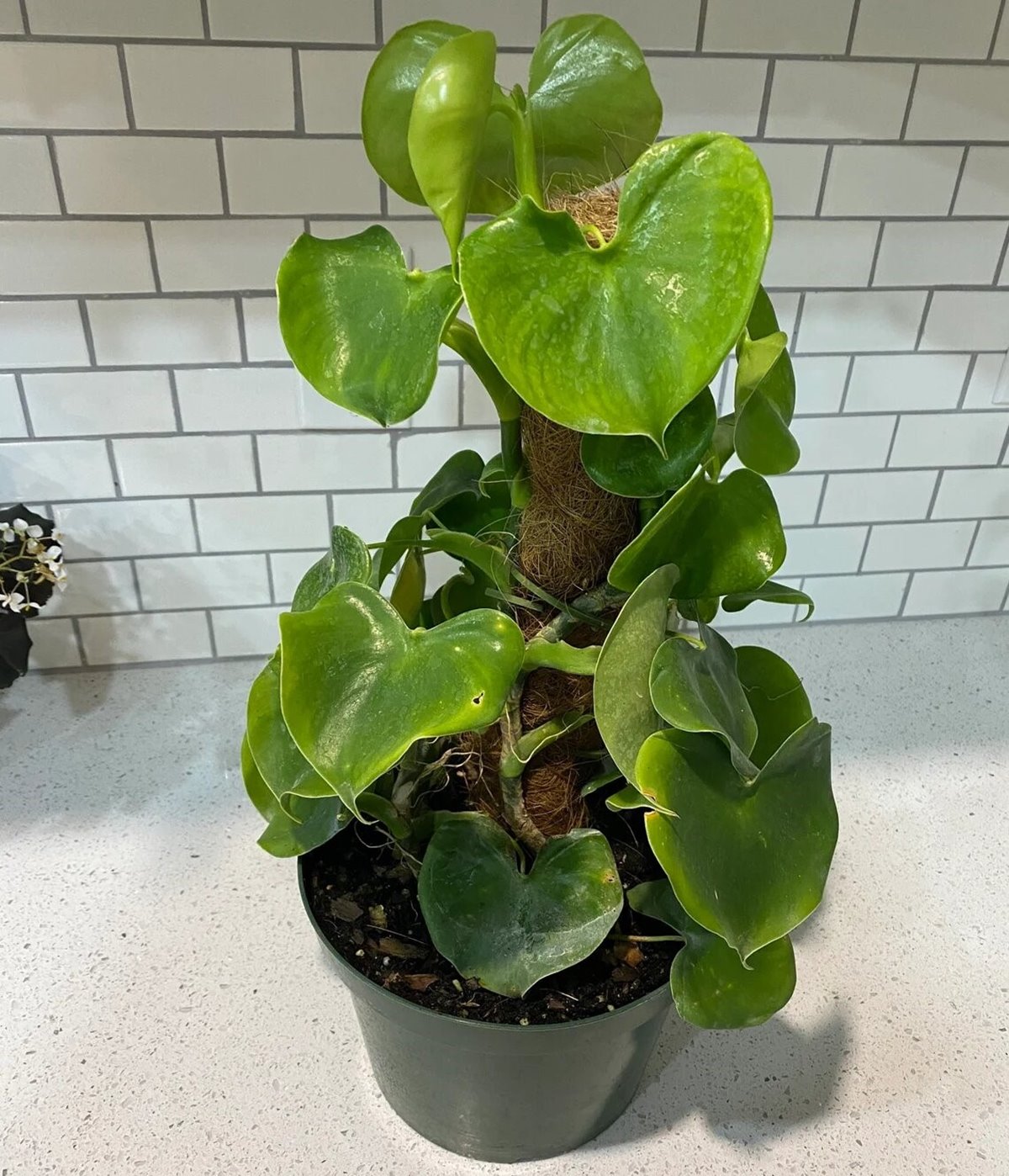
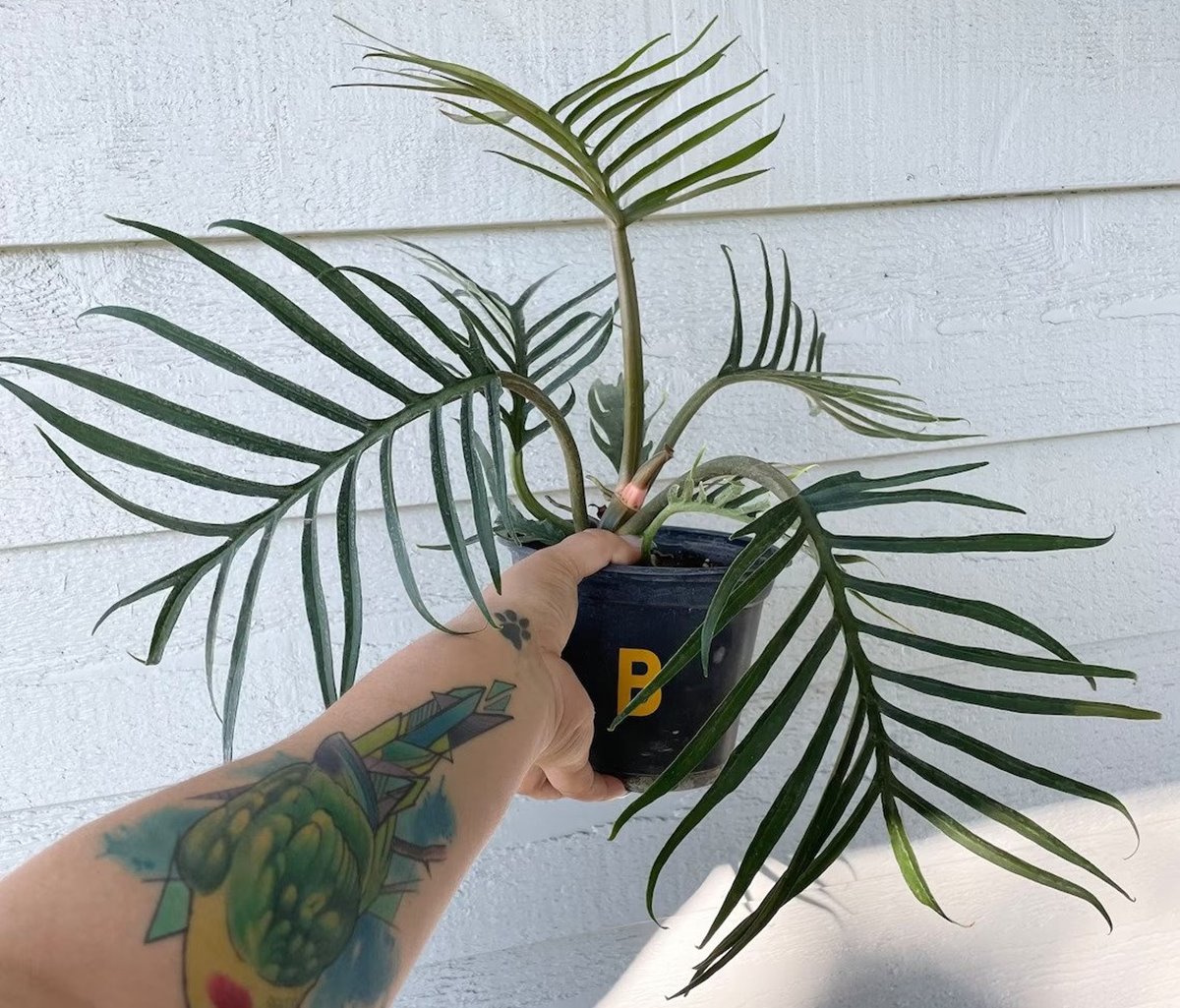
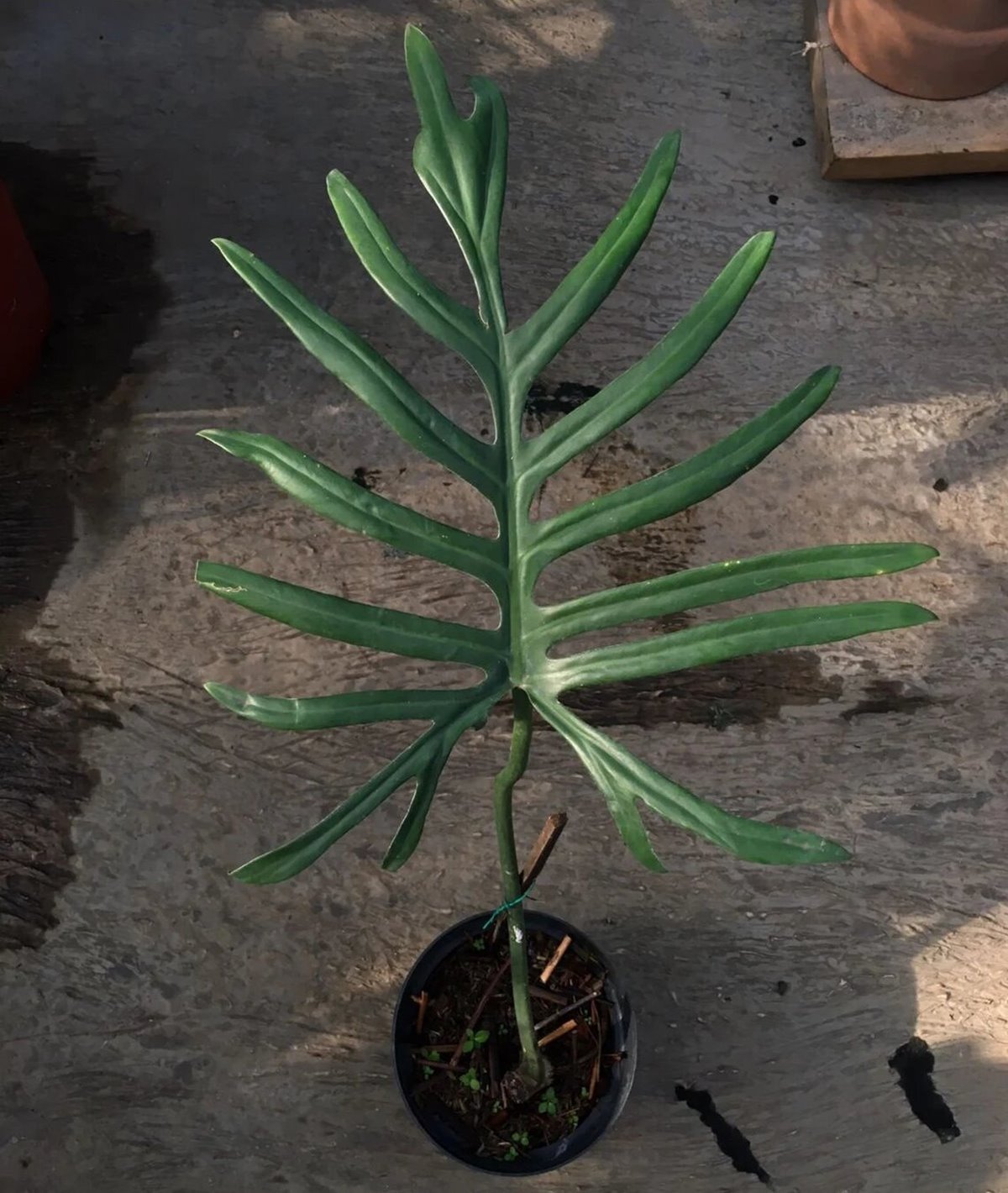
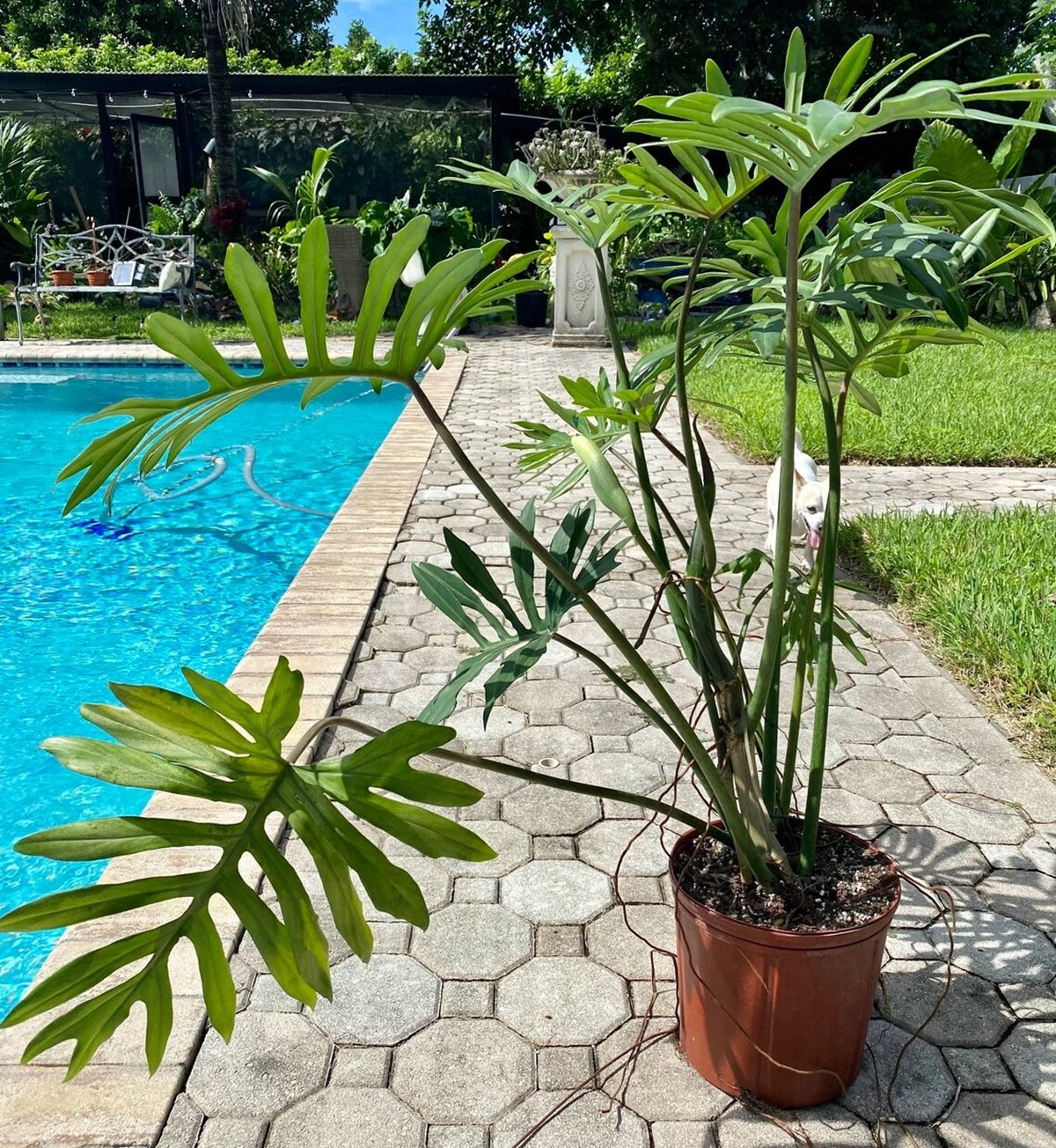
Plantipus
good and complete article, thank you for the information about philodendron mayoi, I enjoyed reading it.
Sylvan Studio
Wow, I love reading this article. Thank you very much for sharing.